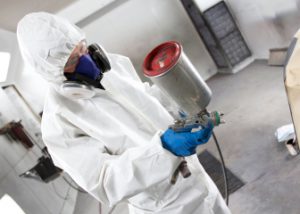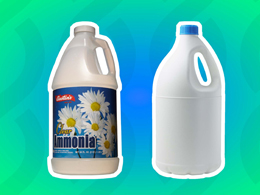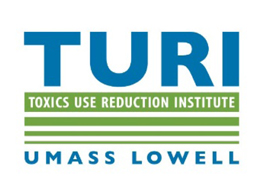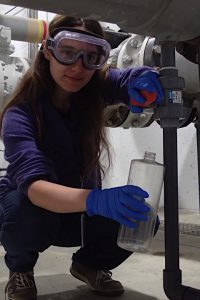February 2020 – Chemicals in Our Lives
Inside the Newsletter:
Cleaining Air in Phillips Community | Dangers of Mixing Common Cleaning Products | Safer Alternatives to Methylene Chloride | Green & Safer Product Grants | MPCA Project Proposals | MPCA Grants for Emission Reductions

Clearing the Air in the Phillips Communities
Locally, poor air quality affects Minnesotans by triggering a range of health problems, from itchy throats to asthma attacks. It also contributes to smog and acid rain, leading to the contamination of water bodies. That’s why MnTAP has been working with community partners Lake Street Council and Hope Community to encourage local business owners to use less toxic, lower-emission cleaning and degreasing products to reduce air emissions in and around the Phillips neighborhoods in Minneapolis.
Over the past three summers, MnTAP interns identified potential emission reduction opportunities in foundry, automotive repair, janitorial, child care and restaurant sectors. Combined safer products implemented at these small businesses resulted in reductions of nearly 3,800 lbs hazardous materials, 1,000 lbs VOCs and 540 lbs HAPs being released into the air in this community.
Choosing safer products is not always easy. The major challenge is finding safer products since many containers look similar, but contain different ingredients with a wide range of impacts on health and the environment. Here are some easy tips to choose safer products:
- Look for products that say: Non-Chlorinated & Low VOC, 50 State Compliant, or Non-Chlorinated.
- Stay away from chlorinated or non-flammable brake cleaners.
- Find products that can be sold in bulk and invest in refillable cans.
If you are an owner/employee of a business that uses cleaners and degreasers and want to learn more about choosing safer products, visit MnTAP’s Air Quality Basics web page.
Dangers of Mixing Common Cleaning Products
Avoid Toxic Fumes, Use Safer Substances
The following has been excerpted from the full article with permission from the Toxics Use Reduction Institute at the University of Massachusetts Lowell
Cleaning products containing chlorine bleach and acid inadvertently used together on the floor of a Buffalo Wild Wings restaurant in Massachusetts recently killed the general manager. Two weeks after that incident, chemical fumes from mixing cleaning chemicals at a Red Robin restaurant in Woburn sent three employees to the hospital.
These dangerous chemical reactions can also happen with little warning in our homes, especially in small and enclosed environments like bathrooms. Some toilet bowl cleaners contain acid, some glass cleaners contain ammonia and many products contain bleach.
The Toxics Use Reduction Institute at the University of Massachusetts – Lowell has worked with companies and janitorial formulators to find safer cleaning substances or methods that work as well as toxic cleaners. Here are a few
- Cleaning products remove debris, dirt and dust. Sanitizing reduces contaminants to a level where health is not affected. Disinfecting kills all microorganisms and is mostly used in hospitals to prevent infectious diseases. Most households do not need to sanitize or disinfect with a few exceptions. Restaurants need to sanitize food contact surfaces as stated in local regulations.
- Never mix bleach and ammonia cleaners. This brew creates gases called chloramines, which can quickly cause eye, nose and throat irritation, and even death.
- Acid-based toilet bowl cleaners and bleach are also a very dangerous blend. Some people may add bleach to the bowl but the combination of bleach with the acid releases chlorine gas. Even at low levels, it irritates eyes, nose and throat and causes coughing and breathing problems. Very high levels can cause death.
- Mixing two types of drain cleaners, which contain acid and other ingredients, can release chlorine gas or other hazardous byproducts.
Safer alternatives to hazardous cleaning products exist for nearly every type of household cleaner. Optimizing cleaning practices can reduce exposure to hazardous materials. Look for products with credible third-party certification such as Green Seal, EcoLogo and Safer Choice. This means that the products have been reviewed for standards such as performance, health, environment and sustainability.
For more information about using safer cleaning products read TURI’s article, Dangers of Mixing Common Cleaning Products or visit TURI’s Resources Database.
TURI Releases Report on Safer Alternatives to Methylene Chloride
In the new report “Assessment and Effective Alternatives for Coating Removal Products,” TURI documents a multi-year project that identified and evaluated safer and effective alternatives to methylene chloride.
This report is intended to assist businesses, government agencies and the public to make informed decisions.
Numerous occupational and consumer deaths during coating removal operations have resulted from acute methylene chloride poisoning, with 56 reported accidental exposure deaths linked to methylene chloride since 1980. The Massachusetts Toxics Use Reduction Act (TURA) program designated methylene chloride as a higher hazard substance effective in 2014.
Based on TURI’s evaluation, there are safer, cost-effective, and performance-effective coating removal products commercially available that are viable replacements for coating removal products containing methylene chloride and other chemicals of high concern.
Green & Safer Product Chemistry Grants from MPCA
Focus Area: Climate Adaption & Community Resilience
Minnesota’s climate already is changing rapidly and will continue to do so for the foreseeable future.
Climate adaptation is about developing and implementing strategies, initiatives, and actions to help human and natural systems cope with and become more resilient to the impacts of climate change. Adaptation is a form of risk management. Many important climate-influenced effects have already changed. They will continue to change in the decades ahead even if greenhouse gas emissions were to stop immediately.
To that end, MPCA is soliciting grants for approximately $250,000 to research, develop, and implement strategies for communities to adapt to the impacts of climate change and improve community resilience while achieving positive environmental outcomes. These efforts will prevent or reduce the environmental impacts including waste and pollution caused by warming temperatures and extreme precipitation while protecting public health and well-being.
Funding for these projects is intended to prevent or reduce the environmental impacts caused by warming temperatures, extreme precipitation, and other climate impacts while protecting public health and well-being.
Details about the grant:
- Application deadline: March 11, 2020
- Eligible applicants: Minnesota not-for-profit organizations, institutions, political subdivisions of the state, and tribal governments. Multi-organizational collaboration is encouraged.
- Match requirement: 25% or more of the total project budget from local direct and indirect matching support. Match may be in the form of in-kind services or cash.
Visit the MPCA’s Grants for Community Strategies to Adapt to Climate Change page for more information, forms, and past projects.
MPCA is Seeking Project Proposals
MPCA is seeking project proposals from host organizations for a Green Chemistry & Engineering internship at a Minnesota facility in summer 2020. The maximum grant funding is $10,000.
Through these grants, both the host organization and an intern gain experience in advancing the practice of green chemistry and engineering, applied to one or more products or components in any way that supports improved, safer product chemistry.
Grant projects may include work such as:
- Life cycle comparison of candidate materials
- Support safety and/or performance testing of alternative materials or designs
- Work with design, manufacturing, and cross-functional teams to assess the supply and cost of new materials
- Catalog supplier safety data sheets and certifications as part of green/sustainable purchasing initiatives
- Update inventories of chemical regulations and support audits of internal and supply chain compliance
- Learn and perform hazard and alternatives assessment processes
- Support sales and marketing of reformulated products
Company application deadline extended: March 6, 2020
More information is available at the MPCA’s Green and Safer Product Chemistry Grants page.
MPCA Grants for Emission Reductions from Solvents & Coatings
 Volatile organic compounds (VOCs) from common solvent and coating products contribute to poor air quality where we live and work.
Volatile organic compounds (VOCs) from common solvent and coating products contribute to poor air quality where we live and work.
These emissions can be reduced through the use of improved finishes such as:
- Wet-coat, low-VOC, low-HAP, high solids, and water-based products;
- Dry, powder coating;
- Ultraviolet (UV) or infrared (IR) cured products;
- Liquid plastic coating products;
- Other non-wet coat finishes; and
- High efficiency equipment
MPCA grants are now open for organizations, government entities, educational institutions, tribes, and small businesses across Minnesota to switch to alternative solvent and coating products and/or equipment that improves the efficiency of application. More than $650,000 in grants have already been provided to help businesses make the switch. The new products and equipment will reduce air emissions by approximately 24 tons of VOCs within their first year of use
Apply now! Deadline: April 22, 2020
Review grant materials, application, and Q&A on the MPCA grants for solvent and coating emission reductions webpage.



